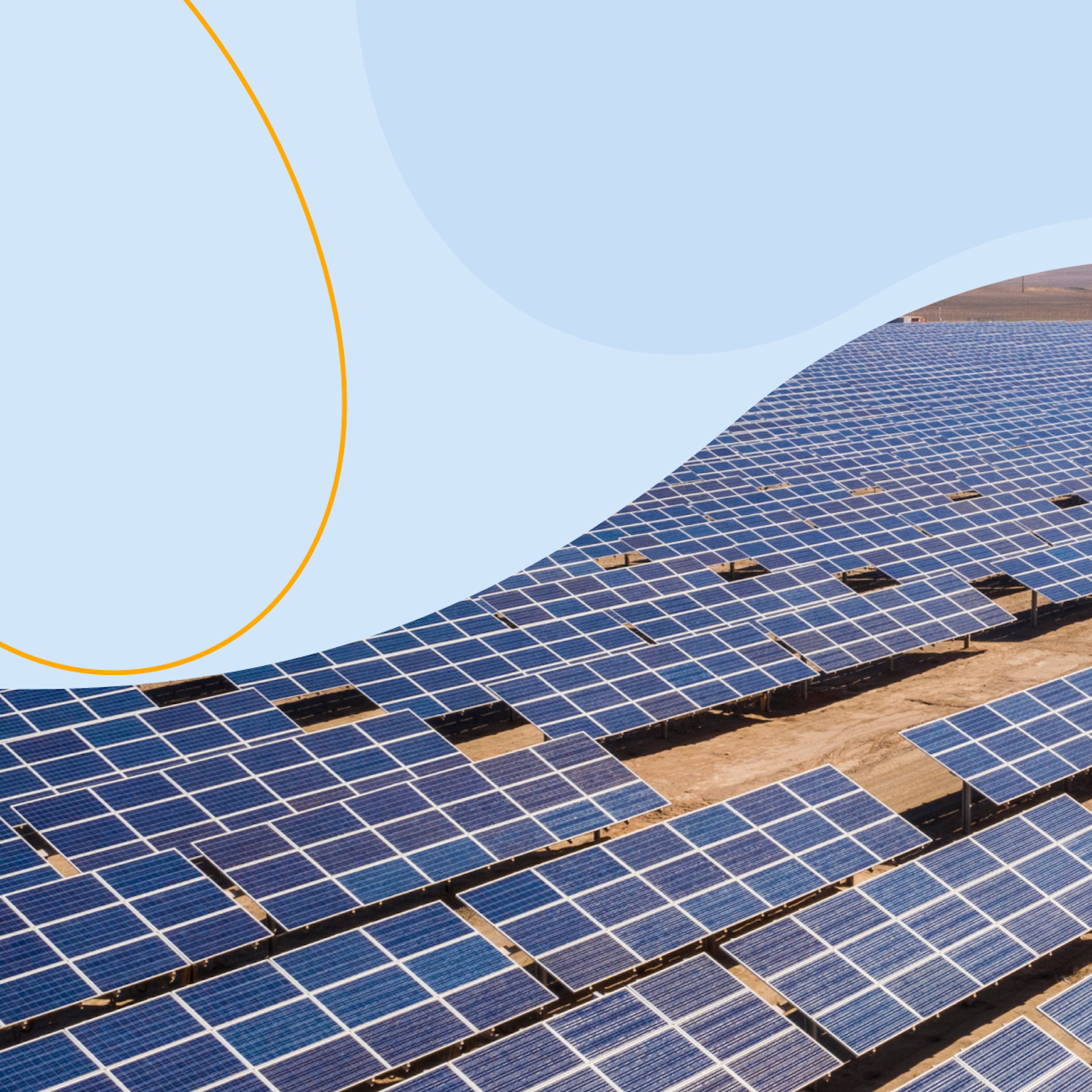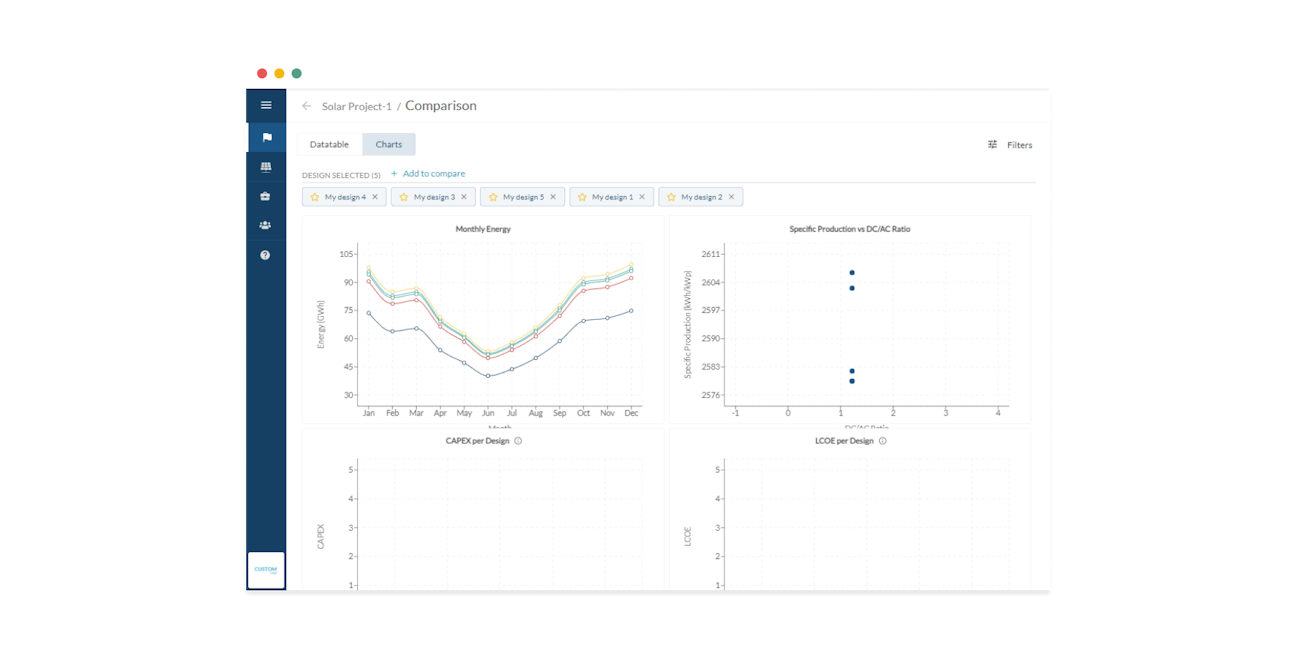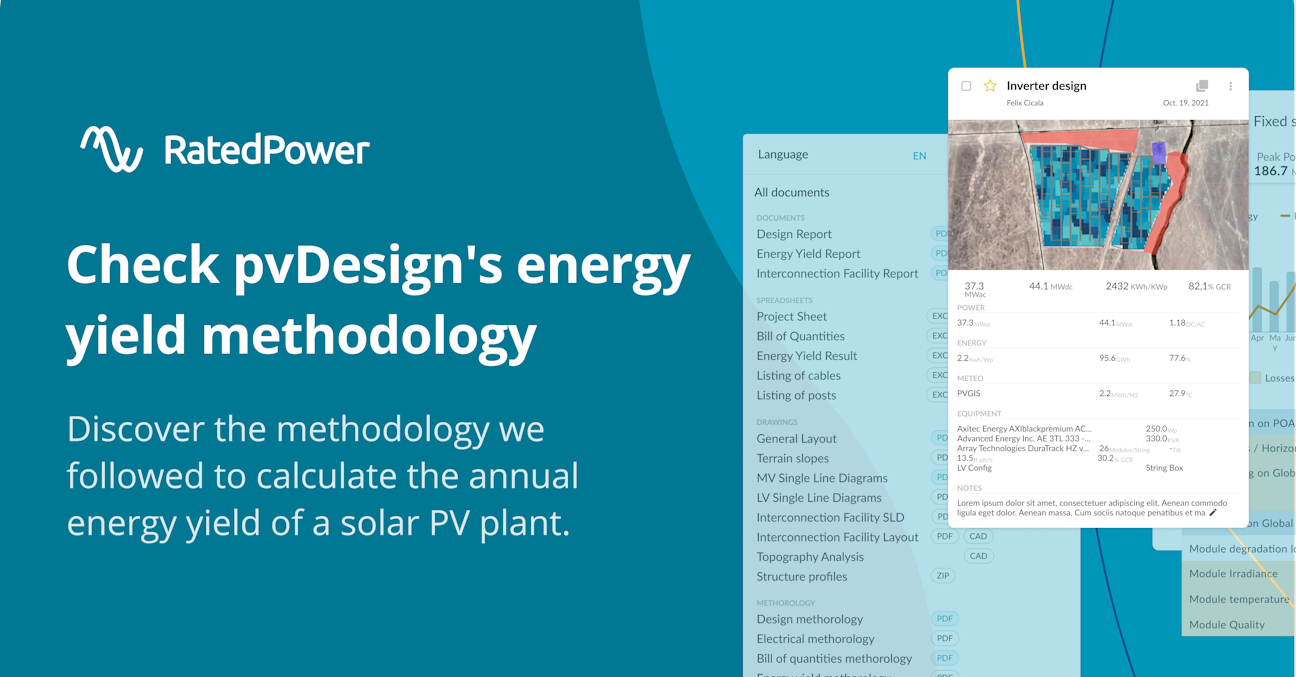- Solar energy blog
- The era of standalone energy yield software is ending
The era of standalone energy yield software is ending


Gregory Rosen
Founder & Principal at High Noon Advisors
Greg is a hands-on renewable energy and finance professional who, over the last 22 years, has developed or financed more than $400 million worth of residential, commercial and utility-scale solar projects, and has played a key in-house or advisory role in massively scaling several clean energy companies such as Sunpower and Mosaic.
Over the last several years, he has worked with dozens of companies and non-profit organizations to craft plans and raise scalable, community-friendly financing for clean energy products, services, and initiatives in both the US and the developing world. He holds both a Bachelor's and Master's Degree in Regional Science from the University of Pennsylvania.

Content
While inputs to PV system energy yield (EY) models vary by project, there is fundamentally just one well understood approach to calculating EY—a calculation “engine”—that works for all PV systems.
In this article, we’ll look at:
The foundations of PV system energy yield calculations
How standalone EY tools have dominated the landscape for over 20 years
How solar investors and funds benefit from integrating design, engineering and energy yield in one tool
Software that integrates energy yield calculations into a PV system design enables a faster, more cost effective development approach, and it promotes better analysis with regard to the trade-offs between design, system cost, system footprint, energy yield and maintenance.
Integrated software also enables better forensic (e.g. estimated vs actual) energy yield analysis by enabling more efficient and robust data handling due to the fact that design and yield calculation data are in the same data record.

RatedPower energy yield calculation and comparison.
RatedPower is a best-in-class platform for ground-mounted utility scale projects, and its embedded energy yield model is fundamentally similar to PVSyst’s calculation engine as it uses the well-established and bankable EY calculation formula.
Traditional energy yield software
Many parts of the solar industry have tremendously evolved over the last 20 years, but the approach to calculating solar energy output from a given PV system generally has not.
For years, the vast majority of solar industry professionals have simply relied on a small handful of energy yield calculation tools such as PVWatts, PVSyst or its alternatives, and they’ve made little distinction between the mix of hard science that these programs use, and the art of determining the system-specific parameters that go into these models.
The science of energy yield calculation
One way to parse the energy yield calculation is to think of it in terms of two main components:
The underlying calculation algorithms which together form a calculation “engine”, based on hard science and physics, and where a scientific consensus has been reached
The inputs to these algorithms.
The calculation engine
There are a few key algorithms, whose underlying methods are generally accepted by the scientific community, that are used to calculate EY, and each one consists of proven mathematical models with very little uncertainty. These models are well understood and will produce nearly identical answers when the inputs are comparable.
One such algorithm determines where the sun is in relation to the PV system. The conventional wisdom that the sun simply rises in the east and sets in the west is only accurate on certain parts of the earth--the reality is much more complex due to the shape of the earth and angle of the earth’s rotation.
The geometry and physics around sun position has been well studied since the time of Galileo, and the complex math has been simplified into sun position algorithms that are accurate to within 0.0003 degrees. While there are basic and detailed solar position algorithms, they are all based on the same underlying and well understood geometry, so for energy yield calculation purposes they can be considered to be essentially interchangeable.
Another algorithm measures direct and indirect irradiance. The amount of solar energy hitting the atmosphere is well understood and very consistent. However, the air and clouds that the solar energy goes through to get to the PV system is in constant flux and can vary tremendously. Similar to the sun position algorithm, however, while there are several complex and hard-to-predict inputs, the underlying irradiance algorithms are static.
All accepted irradiance algorithms use substantially similar approaches to estimate the amount of sunlight that lands directly and indirectly on the PV system. These irradiance algorithms essentially break the sky up into tiny sections, and then calculate the amount of sunlight that lands on the PV modules based on their tilt angle and orientation.
Using these algorithms is only the practical way to estimate something that is not easily measured, and the generally accepted ones are all well within a very tight tolerance of one another. There is no secret to the math, and these proven, open source, algorithms are used to accurately and quickly calculate irradiance.
These algorithms, and others adjusting EY based on PV module type and inverter type, as well as other factors, make up the calculation “engine”.
For a detailed and more technical breakdown of these algorithms, see RatedPower’s energy yield methodology, or visit the U.S. Department of Energy’s National Renewable Energy Lab (NREL) site for a wealth of information.
EY Model Inputs
Unlike calculation algorithms, there is arguably an art to determining the appropriate EY model inputs for a given PV system. Some inputs, such as maximum inverter efficiency, are better understood and easier to predict than others, such as soiling.
An energy yield epiphany
So here is what’s interesting and powerful: once one realizes that EY calculations are simply a hard science-based calculation “engine” with no intellectual property or trade secrets associated with it, and it is the inputs to the EY model, not the engine, that create the material differences in EY, then it makes a lot of sense to use a state-of-the-art engine.
Benefits of a built-in energy yield engine
In our opinion, one such state-of-the-art product with an EY engine built in is RatedPower platform. It is cloud-based, and it also has a superior integrated interface that automatically transfers EY parameters from a given user’s existing detailed design. This enables designers to easily tweak their PV system designs for a given site, and to easily compare the effect of possible design variations on EY. This, in turn, leads to the two major advantages of RatedPower:
Better. Faster. Cheaper.
RatedPower allows for “better, faster, cheaper” learning by the designer by letting them refine inputs in order to optimize design, reduce costs, and increase the value of a PV system.
RatedPower can easily create and help a designer compare dozens of designs for a given site, and by doing so it promotes better analysis with regard to the trade-offs between design, system cost, system footprint, energy yield and maintenance.
Additionally, technical documentation RatedPower produces includes PV Collada, a PVsyst supported file format for shading scene. It allows you to get a much faster and accurate energy yield estimates within PVsyst from your RatedPower projects.
Quickly generate an accurate 3D shading scene in PVsyst. The scene considers the shape of the perimeter, the terrain features, and the presence of adverse slopes from your project in RatedPower.
Get accurate energy yield simulation results. Including the 3D features of the terrain and positioning of the structures.
Evaluate the effects of topography restrictions in your PV plant. Detecting areas which require changes to the design, such as north-facing slopes which could require increasing the pitch.
As new markets, incentives, and time-of-use rate schedules help define the value of a project, the ability to create multiple designs will be more and more valuable.
More robust
Investors and their independent engineers can analyze performance using a much more robust data set that includes design parameters — this leads to better O&M decisions, and better benchmarking for continuous learning.
For example, integrated software enables better forensic (e.g. estimated vs actual) EY analysis by enabling a more efficient and robust root cause analysis that looks at the design parameters associated with the EY calculation. And both authors know how nice it would be to never again have to go hunting around to confirm the exact sources of data used for a PVSyst run!
Take away
We owe a huge debt of gratitude to the developers of the first publicly and commercially available EY calculation software.
However, now that the hard work has been done to build and confirm the energy yield engine, doesn’t it make sense to integrate the EY engine into user-friendly web-based software that enables an efficient and iterative optimization of a PV design for a given site?
Challenges will, to some extent, always remain on determining what EY model inputs to use, but they are irrespective of the EY engine which is based on hard science. There is no “secret sauce” involved in the EY engine, and state-of-the-art software such as RatedPower enables better decision-making for designers and project investors.
The era of standalone energy yield software is ending, and integrated products that enable integrated analysis such as RatedPower will become the de facto standard.
About the authors
Gregory Rosen
Greg is a hands-on renewable energy and finance professional who, over the last 22 years, has developed or financed more than $400 million worth of residential, commercial and utility-scale solar projects, and has played a key in-house or advisory role in massively scaling several clean energy companies such as Sunpower and Mosaic.
Over the last several years, he has worked with dozens of companies and non-profit organizations to craft plans and raise scalable, community-friendly financing for clean energy products, services, and initiatives in both the US and the developing world. He holds both a Bachelor's and Master's Degree in Regional Science from the University of Pennsylvania.
Find Greg at LinkedIn or visit High Noon Advisor site.
Dave Williams
Dave Williams focuses on accelerating bold climate enterprises with finance by connecting private capital and technology for the public good. He is a Sir Edmund Hillary Fellow recognized for mission-driven innovation and entrepreneurship. He is experienced in climate change resilience, renewable energy development, social entrepreneurship, and a passion for transformative market-based mechanisms.
He has served as Senior Fellow at US Department of Energy's Energy Climate Partnership of Americas and UC Berkeley. He founded and operated innovative energy businesses around the world. He serves various non-profits in emerging markets through board & advisory roles.
Find Dave at LinkedIn.
Latest stories
Related posts
Technology and engineering
Outsmarting congestion: How efficient solar design helps navigate Nordic grid limits
Learn how Nordic operators and solar developers are adjusting to tighter grid conditions and how policy and design decisions are keeping projects on track.
Updated 16 DEC, 25

Technology and engineering
The rise of ultra-thin perovskite solar cells
Learn about Japan’s $1.5B initiative to commercialize ultra-thin, flexible perovskite solar cells and how it could transform the solar landscape globally.
Updated 30 SEP, 25

Technology and engineering
The green hydrogen boom in LatAm
Latin America is emerging as a green hydrogen leader. Learn how LatAm countries are leveraging solar and wind power to drive green hydrogen production.
Updated 22 JUL, 25

- RatedPower
- Solar energy blog
- The era of standalone energy yield software is ending
 Watch a demo
Watch a demo Ask our AI Product Expert
Ask our AI Product Expert


